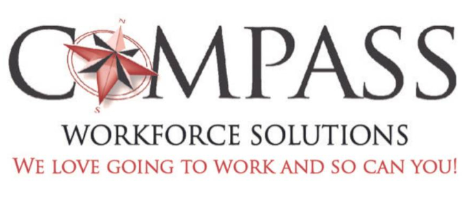
Small and mid-sized businesses face mounting pressure to control operational costs while maintaining essential HR functions and meeting increasingly complex compliance requirements. Many business owners assume they must choose between cost control and compliance protection, but this false dichotomy overlooks strategic approaches that actually strengthen compliance while reducing financial burden. The most successful organizations understand that cutting HR costs means working smarter, leveraging technology effectively, and making strategic decisions about which functions to handle internally versus externally.
When approached strategically, efforts to reduce HR costs often result in improved processes, better compliance outcomes, and enhanced employee satisfaction. The key lies in understanding where your HR investment goes and identifying optimization opportunities that serve multiple objectives simultaneously.
Understanding the True Cost of HR Functions
Before optimizing HR costs, businesses must understand the total investment required for effective human resources management. This extends beyond obvious expenses like salaries and benefits to include technology costs, training investments, compliance management, and the opportunity costs of time spent by non-HR personnel on HR tasks.
Many businesses underestimate the hidden costs of HR management, particularly the time investment required from managers, administrators, and employees for routine HR activities. When these indirect costs are quantified, the true cost of HR functions often exceeds initial estimates.
Understanding cost components enables better decision-making about resource allocation and service delivery models. For example, the cost of maintaining internal payroll processing includes not just software licensing but also staff time for processing, error correction, compliance monitoring, and year-end reporting.
HR Cost Analysis Framework
| Cost Category | Internal HR Staff | Basic Outsourcing | Strategic HR Partnership | Hybrid Model |
| Personnel Costs | High salary + benefits | Monthly service fees | Scalable service costs | Reduced internal + external |
| Technology & Tools | Separate procurement | Often included | Comprehensive platforms | Shared investments |
| Training & Development | Ongoing investment | Limited inclusion | Professional development | Targeted investments |
| Compliance Management | Risk of gaps | Basic coverage | Comprehensive protection | Strategic coverage |
| Strategic Planning | Limited by experience | Minimal | Integrated expertise | Collaborative approach |
Smart Outsourcing Strategies That Save Money
Strategic outsourcing can reduce costs while improving service quality and compliance outcomes when approached thoughtfully and effectively. The key distinction lies between cost-cutting outsourcing, which focuses primarily on reducing expenses, and strategic partnership approaches that emphasize value creation and business improvement.
Value-based outsourcing decisions consider not just cost reduction but also quality improvement, risk mitigation, and strategic advantage. This approach often identifies opportunities to improve HR effectiveness while reducing total investment.
7 HR Functions That Benefit from Strategic Outsourcing
- Payroll processing and tax compliance for accuracy and efficiency
- Benefits administration to leverage group purchasing power
- Compliance monitoring and policy updates for specialized expertise
- Employee relations investigations for objectivity and legal protection
- Training and development programs for access to professional content
- Recruitment and screening for specialized tools and networks
- Performance management system design for best practices implementation
Right-Sizing Your HR Investment
Effective cost optimization requires an honest assessment of which HR functions truly require internal oversight versus those that benefit from external expertise. This evaluation considers factors like strategic importance, required expertise level, frequency of need, and risk implications.
Core business functions that directly impact competitive advantage or require intimate knowledge of organizational culture typically warrant internal management. Administrative functions, compliance monitoring, and specialized expertise areas often provide better value through external partnerships.
The right-sizing process should also consider growth projections and scalability requirements. Functions that will need significant expansion as the business grows may be better served through scalable external partnerships rather than internal capability building.
Leveraging Economies of Scale
Outsourcing providers achieve cost efficiencies through shared resources, technology investments, and specialized expertise that individual companies cannot match. These economies of scale enable access to enterprise-level capabilities at small business prices.
Technology represents a particularly compelling example of the benefits of economies of scale. HR information systems that would cost individual companies thousands of dollars annually become accessible through outsourcing relationships that spread costs across multiple clients.
Professional expertise provides another advantage of scale. Rather than maintaining internal expertise across all HR specializations, businesses can access specialized knowledge in areas like employment law, compensation design, and employee relations through strategic partnerships with providers like Compass Workforce Solutions.
Technology Solutions That Reduce Administrative Burden
HR technology can automate routine tasks, reduce manual processing, and minimize the time investment required for basic HR functions while improving accuracy and compliance outcomes. The key is selecting solutions that provide immediate ROI through efficiency gains and error reduction.
Modern HR technology platforms integrate multiple functions—such as payroll, benefits administration, performance management, and compliance tracking—into comprehensive systems that eliminate duplicate data entry and reduce administrative overhead.
The most effective technology implementations focus on eliminating manual processes that consume significant time while providing minimal strategic value. Automated payroll processing, employee self-service portals, and digital document management represent high-impact areas for efficiency improvement.
Technology Investments That Pay for Themselves
- Automated payroll systems that eliminate manual calculation errors
- Employee self-service portals that reduce administrative inquiries
- Digital document management that streamlines record keeping
- Automated compliance alerts that prevent costly violations
- Online training platforms that scale without additional staffing
- Performance management tools that standardize processes and documentation
Integration and Efficiency Benefits
Integrated HR systems reduce duplicate data entry, improve accuracy, and create process efficiencies that justify technology investments. When payroll, benefits, and time tracking systems share data automatically, the efficiency gains compound across multiple processes.
Integration also improves compliance by ensuring consistent data across systems and enabling automated reporting for regulatory requirements. These compliance benefits often provide cost savings that exceed the investment in technology.
Real-time data access through integrated systems enables better decision-making and faster problem resolution, creating operational benefits that extend beyond direct cost savings.
Process Optimization for Maximum Efficiency
Streamlining HR processes reduces time investment while improving outcomes and compliance. Process optimization often delivers immediate cost savings with minimal upfront investment, making it an attractive starting point for cost reduction initiatives.
Common process inefficiencies include duplicate data entry, manual tracking systems, inconsistent procedures across departments, and a lack of standardized workflows. Addressing these inefficiencies typically requires redesigning the process rather than investing in technology.
The most effective process optimization efforts focus on eliminating non-value-added activities while improving consistency and reducing error rates. This approach often improves employee satisfaction while reducing costs.
Quick Wins for HR Process Efficiency
- Standardized forms and checklists that ensure consistency and completeness
- Automated workflow systems that reduce manual tracking and follow-up
- Centralized document storage that eliminates search time and duplication
- Template libraries that speed policy development and communication
- Regular audit schedules that prevent small issues from becoming major problems
- Cross-training programs that create backup capabilities without additional staffing
Strategic Cost Management Without Compliance Compromise
The critical balance between cost control and compliance requirements requires strategic approaches that achieve both objectives simultaneously. The most successful strategies recognize that compliance failures often cost more than the investments required for prevention, making comprehensive compliance protection a sound financial strategy.
Risk-based decision making helps prioritize compliance investments based on probability and potential impact. High-risk areas with severe potential consequences warrant greater investment than low-risk areas with minimal impact potential.
Strategic compliance management focuses on building systems that become more efficient over time rather than requiring constant investment increases. This approach emphasizes prevention over remediation and systematic improvement over crisis management.
6 Strategies for Cost-Effective Compliance Management
- Proactive compliance monitoring that prevents costly violations
- Regular policy reviews that address issues before they become problems
- Employee training programs that reduce compliance risks through education
- Documentation systems that protect against legal challenges
- Strategic partnerships that provide expertise without full-time costs
- Technology solutions that automate compliance tracking and reporting
Risk-Based Cost Decision Making
Effective compliance cost management requires frameworks for evaluating investments based on risk level and potential cost impact. This approach enables strategic resource allocation that provides maximum protection per dollar invested.
Risk assessment should consider both the probability of violations and their potential consequences. High-probability, high-impact risks warrant immediate attention and investment, while low-probability, low-impact risks may justify minimal investment.
The framework should also consider the business impact of compliance failures beyond direct penalties, including reputation damage, productivity losses, and management distraction that often exceed direct violation costs. HR risk assessment services help identify high-priority areas for cost-effective compliance investment by providing a systematic evaluation of current practices and targeted recommendations for improvement.
Measuring ROI on HR Cost Reduction Initiatives
Measuring the effectiveness of HR cost reduction strategies ensures they deliver sustained value rather than short-term savings that create long-term problems. Effective measurement considers both direct cost savings and indirect benefits like improved compliance, reduced turnover, and increased efficiency.
The measurement framework should also track quality indicators to ensure that cost reduction doesn’t compromise service levels or business outcomes. Balanced scorecards that include cost, quality, compliance, and employee satisfaction metrics provide a comprehensive evaluation.
Key performance indicators include cost per employee for HR services, compliance audit results, employee satisfaction scores, time-to-fill for open positions, and manager satisfaction with HR support. These metrics offer a comprehensive view of HR effectiveness, extending beyond simple cost measures.
Optimize Your HR Investment for Maximum Value
Effective HR cost management focuses on value optimization rather than simple cost cutting. The most successful businesses invest strategically in HR functions that prevent costly problems while optimizing delivery methods for maximum efficiency.
Compass Workforce Solutions helps businesses achieve cost-effective HR excellence through strategic partnerships and optimized service delivery. Our approach focuses on value creation rather than simple cost reduction, ensuring that your HR investment supports business growth while controlling expenses.
Contact us today to discuss customized approaches to HR cost optimization that maintain compliance and quality while improving financial efficiency.








